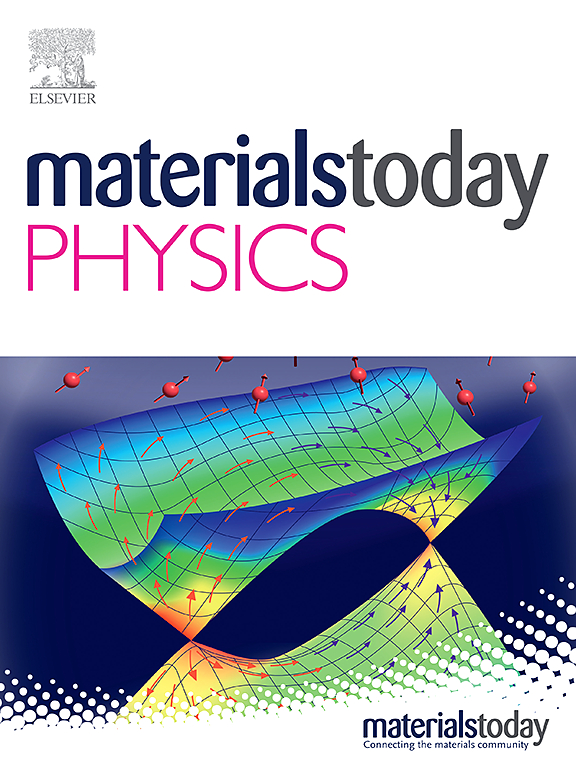Metal ion mediated conductive hydrogels with low hysteresis and high resilience
IF 9.7
2区 材料科学
Q1 MATERIALS SCIENCE, MULTIDISCIPLINARY
引用次数: 0
Abstract
Conductive hydrogels with poor mechanical properties seriously limit the service life of sensors and flexible electronics. Outstanding mechanical properties and electrical conductivity are the bottleneck of the application of conductive hydrogels. To combined excellent elasticity and electronic conductivity, herein, a new method was employed to achieve elastic dissipation with low hysteresis via introduce metal ions crosslinking, thereby enhancing mechanical dissipation of polymer network. Specifically, acrylamide (AAm) is a monomer in the covalent network via free radical polymerization. Sodium alginate (SA) form metal coordination bonds with Fe3+, Zn2+ and Ca2+. Poly(3,4-ethylenedioxythiophene)-poly(styrenesulfonate) (PEDOT: PSS) is selected to be a conductive polymer. The resultant AAm/SA/PEDOT: PSS (ASP) hydrogels exhibit low hysteresis, high resilience and excellent electronic conductivity. Metal coordination bonds not only provide high elasticity as elastic dissipation energy, but also enhance electrical conductivity. The ASP hydrogels display combined mechanical performances with elastic modulus (550 MPa), fracture strength (0.81 MPa), fracture strain (473 %) and work of rupture (3.13 MJ/m3), and outstanding electronic conductivity (0.32 S/cm) which has great potential for extending the service life of hydrogels.
低迟滞、高回弹性的金属离子介导导电水凝胶
导电性水凝胶力学性能差,严重限制了传感器和柔性电子设备的使用寿命。优异的机械性能和导电性是导电水凝胶应用的瓶颈。为了结合优异的弹性和电子导电性,本文采用了一种新的方法,通过引入金属离子交联来实现低迟滞的弹性耗散,从而增强聚合物网络的机械耗散。具体来说,丙烯酰胺(AAm)是通过自由基聚合形成共价网络的单体。海藻酸钠(SA)与Fe3+、Zn2+和Ca2+形成金属配位键。聚(3,4-乙烯二氧噻吩)-聚苯乙烯磺酸酯(PEDOT: PSS)是一种导电聚合物。合成的AAm/SA/PEDOT: PSS导电水凝胶(ASP)具有低迟滞、高回弹性和优异的导电性。金属配位键不仅提供高弹性作为弹性耗散能,而且提高了导电性能。ASP水凝胶具有弹性模量(550 MPa)、断裂强度(0.81 MPa)、断裂应变(473%)和断裂功(3.13 MJ/m3)的综合力学性能,具有优异的电导率(0.32 S/cm),具有很大的延长水凝胶使用寿命的潜力。
本文章由计算机程序翻译,如有差异,请以英文原文为准。
求助全文
约1分钟内获得全文
求助全文
来源期刊

Materials Today Physics
Materials Science-General Materials Science
CiteScore
14.00
自引率
7.80%
发文量
284
审稿时长
15 days
期刊介绍:
Materials Today Physics is a multi-disciplinary journal focused on the physics of materials, encompassing both the physical properties and materials synthesis. Operating at the interface of physics and materials science, this journal covers one of the largest and most dynamic fields within physical science. The forefront research in materials physics is driving advancements in new materials, uncovering new physics, and fostering novel applications at an unprecedented pace.
 求助内容:
求助内容: 应助结果提醒方式:
应助结果提醒方式:


